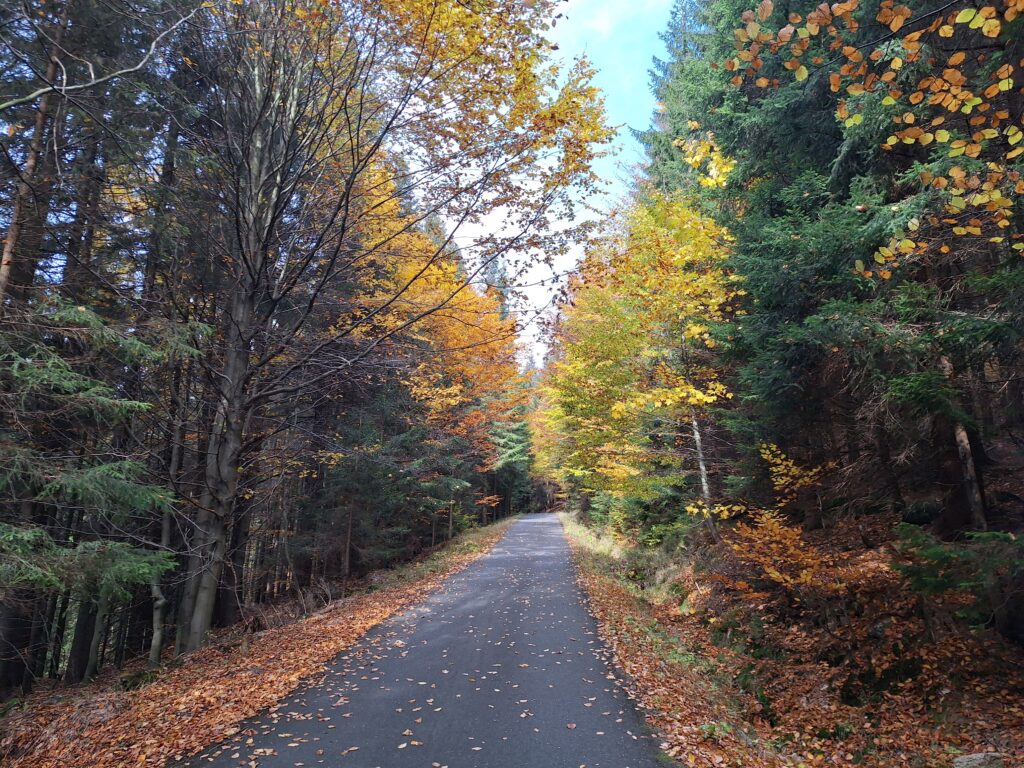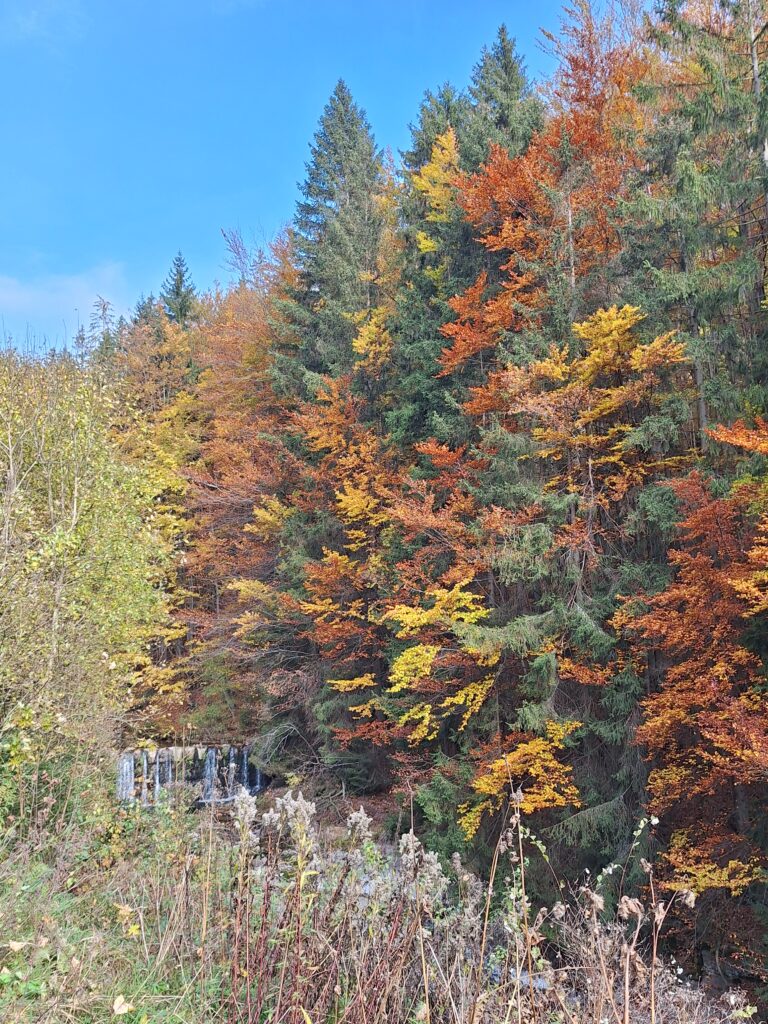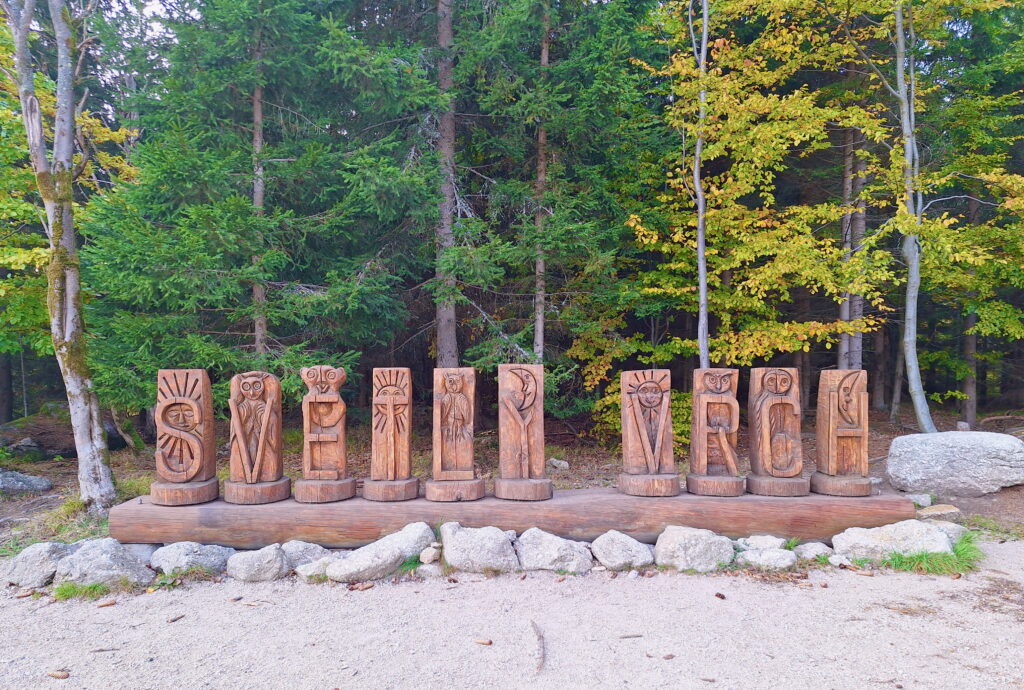Reading Time: 5 Minutes 33 Seconds
Historical context
Desná is a small town in the Jizerské hory (Jizera mountains), in north Bohemia, very close to the Polish border.
It sits at the conjunction of two small rivers: the Bílá Desná (the white Desná) and the Černá Desná (the black Desná).
In the early 1900s, a significant project was initiated in the Jizera mountains to build dams intended to supply electricity to the small villages of the area.
The design of the two dams over the Bílá and Černá Desná rivers was assigned to Wilhelm Plenker, an engineer from Prague specializing in water management and railways.
His project included an underground tunnel, that connected the two dams to allow the water transfer.
Both dams were built simultaneously. The construction began in 1912 and completed in 1915.
Upon its completion, the Bílá Desná dam measured 54m in width at the base, 4m in width at the top, and 14.6 meters in height.
It was built at an altitude of 820m, and it was supposed to store 400.000 m3 of water.
The burst
Ten months after the dams were built, on the 18th of September 1916, two forest workers noticed a water leak in the dam structure.
They alerted the dam manager and the construction manager, who instructed them to open the dam’s valves immediately to drain it.
However, as the intensity of the water spill increased, the workers felt their safety was at risk and chose to evacuate the area, leaving the valves only partially open.
Seventy minutes after the first leak was first detected, the Bílá Desná dam broke.
The water that had accumulated in the reservoir flowed out with strong intensity and speed, and in short time it flooded the valley below.
The houses in Desná were destroyed and many people died.
Why did the dam break?
The trial to determine the reasons of the burst and to identify the culprit lasted 17 years.
The verdict concluded that the dam was built in an inappropriate location, as the soil beneath the reservoir was geologically faulty and unstable.
The people involved in the dam’s construction were either acquitted of all charges or granted pardon.
A new study conducted in 1996 on the occasion of the 80th anniversary of the catastrophe somehow confirmed the verdict.
It revealed that the bedrock located at approximately 25m below the dam’s foundations had eroded, and there was also evidence of a fracture along the river valley’s axis.
Since this conformation was located at a very deep level underground, it would have not been possible to detect it at that time, as geological investigations did not reach such depths.
Therefore, the lack of deep geotechnical explorations was the actual cause of the disaster.
The dam of Desná today
The dam was never rebuilt, and today it stands as a silent witness to the tragedy.
What remains are the gate tower, some parts of the dam, and the underground tunnel that connects to the Souš reservoir of the Černá Desná river.
A short trail of 800m guides you through the area, with 6 marked stops at specific locations.
If you move a bit further, you will find a monument to the victims, which was made from a piece of the original dam and wrapped with strips bearing the names of the victims.
From 1996 the place is as a national cultural monument.
Following the disaster at the Bílá Desná dam, several reconstructions were undertaken on the Černá Desná dam to prevent a similar incident.
Over the years, the dam’s level was raised and reinforced, and a new drainage system was installed.
Today, the Souš basin formed by this dam serves as a drinking water reservoir for the nearby localities of Tanvald and Jablonec nad Nisou.


How to get there
Reaching the dam is pretty easy.
- By public transport: try avoiding the train from Prague, because there are very few “quick” connections. Opt for a bus or a combination of bus+train and in a couple of hours you should be there. Always check pubtran.cz for the most recent schedule.
Once you arrive in Desná, you can follow the path n. 3019. - By car: you can park for free in this area and walk 3km from there. The trail is almost completely paved, and for the first big portion it is asphalt. Keep in mind that the parking lot is small and there is space for about 20 cars.
- By bike: it can be tricky if you are not already in the area. The only way to transport your bike is by train, and the trip takes minimum 4 hours, with multiple changes. So not really the best thing for 1 day out.
You could also check the alternative of a Flixbus to Liberec (add the “bike” option during the search) and a train from there to Desná.
Keep in mind that even though Flixbus marks many buses with a bike rack, several times there is no rack and your bike will be thrown in the luggage compartment at the bottom.
If that is the case, you can write them and ask for a refund.
From Desná you can follow the same walking path mentioned above and then return via the 3020 – Hřebenovka for a nice 20km loop.
Add a hike!
If you wish to have a longer hiking loop, I propose you this 14km trail, which we did in autumn.
The only downside of this path is the significant amount of asphalt, as the route to and from the dam is entirely paved.
Nevertheless, the natural scenery is very beautiful in every season and the air is extra fresh.
If it is not ski season you can park for free at the ski area in Tanvaldský Špičák and begin the walk from there.
A first stop would be at the mausoleum of the Schowanka family (point 2 on the map). Even if you are not into architecture, it is an interesting piece.
The tomb was built for Johann Schowanka, the founder of a wooden toy manufacturing company in the village of Jiřetín pod Bukovou, not far from Desná. There, you can visit the museum dedicated to wooden toys production and see Schowanka’s villa.
Next, take a break for breakfast or for a snack at “Bistro Stodola” (point 3), then continue along the blue marked path until you reach the road. From this point, you cannot go wrong, as there is only one way leading to the dam.
The road becomes pedestrian-only just after the previously mentioned parking area and the bridge over the Bílá Desná.
To leave the dam, follow the yellow trail, which climbs through the forest.
At the crossroad marked “Mariánskohorské Boudy”, turn left to join green marked path via Bučina.

Follow the green signs all the way back until you reach Světlý Vrch (the Bright Hill), at point 9.
There, you can climb the lookout tower for a stunning 360° view of the surroundings.
Then, descend via one of the many paths through the forest and connect again to the blue trail and then to the road until your parked car.

